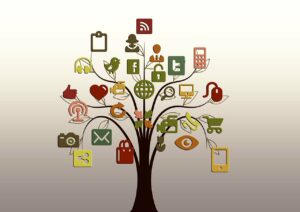
Isolation is more than just being alone. It’s that nagging feeling of disconnection where time stretches endlessly with minimal social interaction. Our minds aren’t designed to cope well with prolonged isolation, and it’s crucial to understand why that matters. This article explains how you can alleviate isolation by exploring GPTs.
Studies have shown that chronic loneliness can have severe implications on mental health, leading to conditions like depression, anxiety, and a general decline in mental well-being. It’s like a domino effect where one aspect of mental health impacts another, creating a cascading series of challenges.
Globally, there’s been an alarming rise in loneliness and isolation, significantly amplified by recent events like the COVID-19 pandemic. According to various surveys, a significant portion of the population feels lonelier than ever. This growing trend of isolation isn’t just a statistic; it reflects a real-world crisis affecting millions.
Addressing isolation isn’t just about mitigating negative feelings; it’s about ensuring holistic well-being. Social connections are fundamental to our happiness and health, acting as a buffer against life’s stresses. Without them, our mental resilience takes a hit.
Knowing the stakes and exploring innovative solutions to combat isolation is vital. Building awareness and understanding the impact on mental health is the first step towards creating a more connected world.
What are GPTs?

Generative Pre-trained Transformers, or GPTs, are exciting tech magic. At their core, GPTs are advanced AI models designed to understand and generate human-like text based on the data they’ve been trained on. They are incredibly smart chatbots that can discuss various topics, craft stories, answer questions, and generate creative content.
GPTs’ journey started with the development of machine learning and natural language processing technologies. Over the years, these models have evolved from simple text-based programs to sophisticated AI capable of nuanced conversations and complex problem-solving. The most well-known of these models, GPT-3, took the tech world by storm with its impressive capabilities.
GPTs have integrated themselves into our daily lives more than we might realise. These AI companions are everywhere, from customer service bots that handle queries efficiently to virtual assistants that help manage our schedules and tasks. They’ve become tools for writers, programmers, and even educators, offering support and generating content or code.
Understanding the potential and limitations of GPTs is essential. While they can mimic conversation very well, it’s crucial to remember they’re not sentient. They’re designed to provide information and companionship based on pre-existing data, making them functional but not a replacement for human interaction. The value lies in how GPTs can enhance our everyday experiences by assisting and potentially alleviating feelings of isolation.
Role of GPTs in Reducing Isolation
Imagine having a friendly, always-available companion right at your fingertips—this is where GPTs come in. These AI-powered tools can provide meaningful interaction, making them a fantastic ally against loneliness.
GPTs excel in offering engaging conversation. They can handle it all if you want to chat about your favourite books, ask for movie recommendations, or discuss current events. This ability to engage in a wide range of topics makes them a valuable resource for anyone feeling isolated.
Real-life examples demonstrate the power of GPTs in combating loneliness. From seniors living alone to individuals in remote locations, many have found comfort and companionship in these virtual assistants. By providing daily interactions, GPTs help maintain a sense of normalcy and reduce feelings of disconnection.
The mental health benefits of interacting with GPTs are notable. Regular engagement with these AI can help combat loneliness by simulating social interaction. They provide a safe space to express thoughts and feelings without fear of judgment, which can be particularly beneficial for those struggling with social anxiety or depression.
One important aspect to note is that while GPTs can be incredibly helpful, they’re not a substitute for human contact. They’re a supplementary tool that can enhance social well-being, especially when human interaction is limited. Balancing AI interaction with real-world connections is key to maintaining mental health and happiness.
Practical Ways to Use GPTs for Social Interaction

Engaging with GPTs can be both fun and enriching. These AI companions offer a variety of interactive activities that can make social interaction more dynamic. Games and quizzes are a great way to start. Playing trivia or word games with a GPT passes the time and keeps your mind sharp.
Using GPTs to learn new skills and hobbies can be immensely rewarding. Whether you are trying to learn a new language, understand coding basics, or even get cooking tips, these AI tools can provide guidance and suggestions tailored to your pace and interests. This makes the learning process more engaging and less intimidating.
GPTs can also facilitate virtual connections with others. Imagine organizing a virtual book club where members discuss their readings with the help of a GPT-generated summary or discussion points. Or think about virtual group therapy sessions where GPTs assist in initiating and moderating discussions, ensuring everyone can be heard.
Another way to incorporate GPTs into your social routine is through creative collaboration. Writing stories or poetry, creating music, or even brainstorming business ideas can be a lot more engaging with a GPT by your side. They offer fresh perspectives and can help overcome creative blocks, making solitary work feel more like a team effort.
Remember, balance is vital. While GPTs provide excellent value in fostering interaction, it’s essential to integrate these AI activities with real-world social connections. The aim is to leverage technology to enhance, not replace, human interaction. Use GPTs as a stepping stone to build confidence in social skills, which can then be transferred to real-life interactions.
Ethics and Considerations in Using AI for Companionship
As we embrace GPTs as a tool for alleviating isolation, we must consider the ethical implications. One of the primary concerns is privacy and data security. GPTs process and store data, so understanding how your information is used and protected is crucial. Always opt for reputable platforms prioritising user privacy and having transparent data use policies.
Maintaining human connections remains a significant aspect of using AI. While GPTs can provide meaningful interaction, they should complement, not replace, real-life social bonds. It’s essential to strike a balance to ensure that human relationships stay at the forefront of our social lives. Over-reliance on AI could lead to further isolation rather than alleviating it.
Ethics in AI interactions also encompass the nature of dependency. Developing an over-dependence on GPTs can blur the line between virtual and genuine interactions. Users, especially vulnerable groups like children or the elderly, might need guidance to navigate these new technologies responsibly. Ensuring that GPT interactions remain a supplement to human connection is key.
Transparency about GPTs’ capabilities and limitations is vital. Users should clearly understand that while GPTs are advanced, they are tools, not substitutes for human empathy or emotional support. Awareness of these limitations helps set realistic expectations and fosters healthier interactions with AI.
Finally, fostering a culture of ethical AI use requires ongoing dialogue and education. As technology evolves, staying informed about best practices for safe and responsible AI interaction will help maximize benefits while minimizing risks. Prioritizing ethics ensures that GPTs remain a positive force in combating isolation without creating new issues.
Future of GPTs in Alleviating Isolation

Looking ahead, the potential for GPTs to further combat isolation is promising. Advances in AI technology could lead to even more sophisticated and human-like interactions, making these companions even more integrated into our lives.
One avenue of growth is integrating GPTs with other emerging technologies. Imagine combining GPTs with virtual reality (VR) systems to create immersive social experiences. These setups could enable people to ‘meet’ in virtual spaces, enhancing the feeling of presence and connection. The possibilities are extensive, whether it’s attending virtual events or simply hanging out in a simulated environment.
Further developments could also see GPTs offering personalized mental health support. AI could be trained to recognise early signs of mental health issues and provide timely interventions or resources. This could act as an additional support layer, supplementing traditional mental health care.
Collaborating with other AI-driven systems can also enhance their effectiveness. For instance, combining GPTs with smart home devices could make interactions more seamless and personal. Imagine a scenario where your AI understands your daily routines, preferences, and needs, making the experience feel more natural and integrated into your lifestyle.
The long-term impact of GPTs on society’s approach to isolation is significant. By reducing barriers to interaction, they offer a new way to stay connected, especially for those who might struggle with traditional social settings. As these technologies evolve, they hold the potential to create more inclusive and supportive social environments.
Keeping an eye on these advancements and staying engaged with new developments ensures we can maximize the benefits while addressing any challenges. The future of GPTs in alleviating isolation looks bright, offering innovative solutions for a more connected world.






